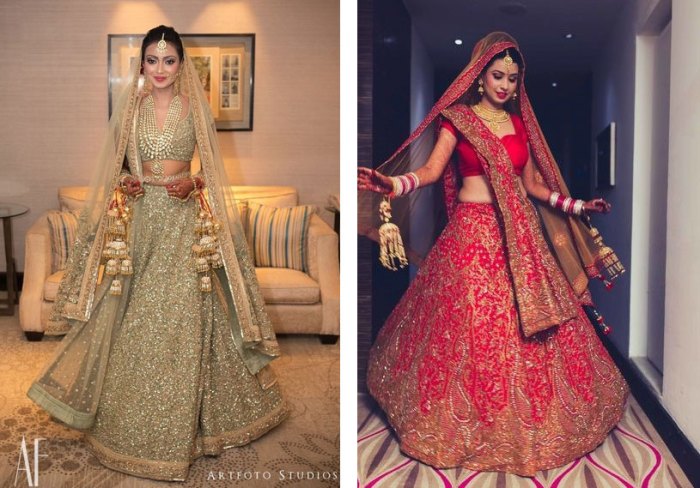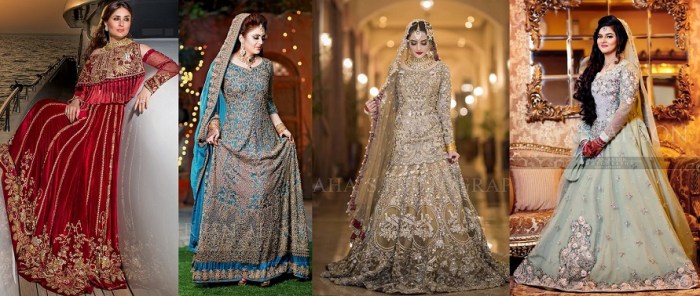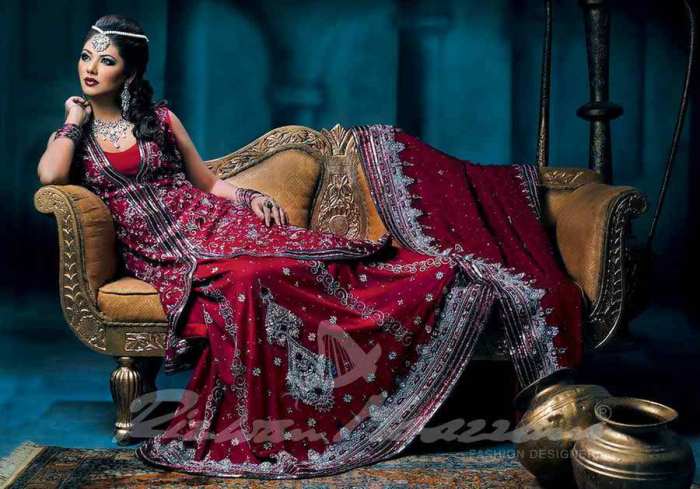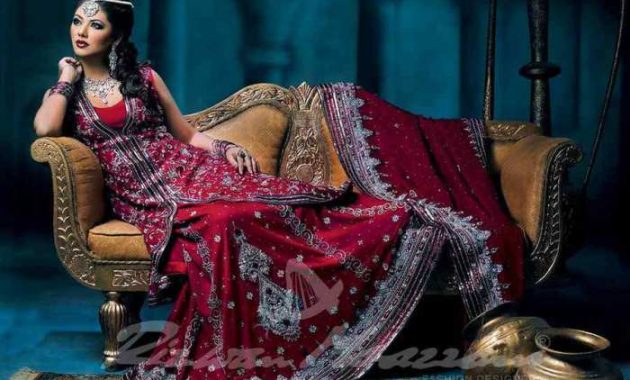Defining “Asian Style” Wedding Dresses: Asian Style Wedding Dresses
Asian style wedding dresses – The term “Asian style” wedding dresses encompasses a breathtakingly diverse range of styles, reflecting the rich tapestry of cultures and traditions across the Asian continent. From the elaborate embroidery of a traditional Chinese qipao to the graceful simplicity of a Korean hanbok, the variations are vast and visually stunning. This section will explore the key characteristics that define these diverse styles, comparing them to Western wedding dress traditions and highlighting the unique cultural significance embedded within each.
Diverse Styles and Key Distinguishing Features
Defining “Asian style” wedding dresses requires acknowledging the significant regional variations. Chinese wedding dresses, for instance, often feature vibrant reds, intricate gold embroidery, and a fitted silhouette, sometimes incorporating elements of the qipao or a more traditional, longer gown. Japanese wedding dresses, in contrast, can showcase white (symbolizing purity) for the ceremony, followed by a vibrant red kimono for the reception.
Korean hanbok, with their flowing lines and pastel hues, present a different aesthetic altogether. Indian wedding dresses are renowned for their opulent embellishments, rich colors, and heavy fabrics like silk and brocade, often featuring intricate embroidery and elaborate layering. Vietnamese áo dài, while not always considered a traditional wedding dress, are increasingly incorporated, offering a sleek, elegant silhouette and often featuring delicate embroidery and rich colors.
A key distinction between Asian and Western wedding dresses lies in the emphasis on cultural symbolism and family tradition. Western styles often prioritize individual expression and modern trends, while Asian styles frequently incorporate significant cultural meanings and family heritage into the design and choice of attire.
Comparison of Fabrics and Embellishments
The fabrics and embellishments used in Asian wedding dresses vary widely depending on the region and tradition. Silk, brocade, and satin are common choices, often adorned with intricate embroidery, beading, and other embellishments. Chinese dresses might feature gold threads and auspicious symbols, while Indian dresses often showcase elaborate Zardozi or Resham embroidery. Japanese kimono often incorporate intricate patterns and subtle details, while Korean hanbok might feature simpler embroidery or decorative details.
The choice of fabric and embellishment often carries deep cultural significance, reflecting the bride’s family history and cultural identity.
Comparative Table of Asian Wedding Dress Styles
| Style | Silhouette | Common Colors | Materials |
|---|---|---|---|
| Chinese Qipao | Fitted, often with a high collar | Red, gold, vibrant hues | Silk, satin, brocade |
| Korean Hanbok | Flowing, often with a wrap-around skirt | Pastel shades, sometimes vibrant colors | Silk, ramie, cotton |
| Indian Lehenga Choli | Layered, with a fitted bodice and flared skirt | Vibrant reds, golds, other rich colors | Silk, brocade, velvet |
Modern Interpretations of Traditional Styles
Modern designers are skillfully reinterpreting traditional Asian wedding dress elements for contemporary brides, creating stunning gowns that seamlessly blend classic aesthetics with modern sensibilities. This section explores these innovative designs and the key trends shaping the evolution of Asian-inspired wedding attire.
Modern Designs and Key Trends
Contemporary designers are achieving this balance by incorporating traditional elements like embroidery, embellishments, and color palettes into modern silhouettes. For instance, a sleek, A-line gown might feature intricate Chinese embroidery, or a minimalist sheath dress might incorporate the vibrant colors of a traditional Indian wedding saree. The use of luxurious, modern fabrics like crepe and mikado silk alongside traditional materials like silk and brocade adds another layer of sophistication.
The overall trend leans toward a more streamlined, sophisticated look, while still retaining the rich cultural details that make Asian wedding dresses so unique.
Innovative Modernization Techniques
- Using laser-cut detailing to create intricate patterns inspired by traditional embroidery.
- Incorporating 3D embellishments for a modern take on traditional beading and embroidery.
- Combining traditional fabrics with modern silhouettes and cuts.
- Utilizing innovative dyeing techniques to achieve unique color combinations and effects.
- Experimenting with asymmetric designs and modern necklines while maintaining traditional details.
Regional Variations and Cultural Significance
The cultural significance of wedding attire varies considerably across different Asian countries. Understanding these nuances provides a deeper appreciation for the artistry and symbolism embedded in these garments. This section explores the cultural significance and traditions associated with Asian wedding dresses.
Cultural Significance and Traditions

Source: theweddingblissthailand.com
In many Asian cultures, wedding attire carries profound symbolic meaning. Colors, fabrics, and embellishments often represent good fortune, prosperity, and fertility. For example, red is a common color in Chinese and Vietnamese weddings, symbolizing joy and good luck. The intricate embroidery and embellishments on Indian wedding dresses often tell stories and carry blessings from the family. The choice of attire is often a collaborative effort, reflecting the bride’s family heritage and cultural identity.
The family’s involvement is crucial, reflecting the importance of tradition and continuity.
Asian-style wedding dresses often feature exquisite embroidery and flowing silhouettes. The elegance of these designs can inspire choices for guests, particularly when considering attire for a more mature attendee; for ideas on sophisticated options, check out this guide on wedding guest dress older woman styles. Returning to the bride’s attire, the rich fabrics and subtle detailing of many Asian wedding dresses create a truly memorable look.
Comparative Table of Regional Variations
| Region | Key Design Features | Common Colors | Materials |
|---|---|---|---|
| China | Intricate embroidery, fitted silhouette | Red, gold | Silk, satin, brocade |
| Korea | Flowing lines, vibrant or pastel colors | Pastel shades, sometimes bright colors | Silk, ramie |
| India | Layered garments, elaborate embellishments | Red, gold, vibrant hues | Silk, brocade, velvet |
Accessories and Styling
Accessories play a crucial role in completing the look of an Asian-style wedding dress, adding further layers of cultural significance and enhancing the overall aesthetic. This section explores the common accessories and styling techniques that complement these stunning gowns.
Common Accessories and Their Significance, Asian style wedding dresses
The accessories worn with Asian wedding dresses vary greatly depending on the region and tradition. Jewelry, headpieces, and veils are common choices, each carrying symbolic meaning. For instance, elaborate necklaces and earrings might be worn in India, while a traditional gaun (headpiece) might be used in a Vietnamese wedding. The choice of accessories often reflects the bride’s personal style and cultural heritage, enhancing the overall look of the gown.
Styling Three Distinct Asian Wedding Dress Styles
A traditional Chinese qipao would be beautifully complemented by intricate gold jewelry and a simple, elegant hairstyle. A Korean hanbok could be paired with delicate hair ornaments and understated jewelry. An Indian lehenga choli would be stunning with layered necklaces, bangles, and a dramatic hairstyle adorned with flowers.
Styling Tips for Incorporating Asian Elements

Source: stylesgap.com
- Incorporate traditional Asian colors into your wedding palette.
- Use traditional Asian fabrics or patterns in your accessories.
- Choose a hairstyle that complements the neckline of your dress.
- Select jewelry that reflects the style and cultural significance of your chosen dress.
- Consider incorporating traditional Asian elements into your wedding décor.
Illustrative Examples of Asian Style Wedding Dresses

Source: emasscraft.org
The beauty and artistry of Asian-style wedding dresses are best showcased through specific examples. This section presents detailed descriptions of five distinct dresses, highlighting their unique design elements and cultural influences.
Detailed Descriptions of Five Wedding Dresses
| Dress Style | Fabrics & Embellishments | Silhouette | Cultural Influences | Overall Aesthetic |
|---|---|---|---|---|
| Modern Qipao with Dragon Embroidery | Silk satin, gold dragon embroidery | Fitted, high slit | Chinese | Elegant, modern |
| Contemporary Hanbok with Pastel Accents | Silk, delicate floral embroidery | Flowing, A-line | Korean | Romantic, ethereal |
| Lehenga Choli with Zardozi Work | Silk brocade, Zardozi embroidery | Layered, flared | Indian | Opulent, traditional |
| Modern Ao Dai with Floral Appliqué | Silk, floral appliqué | Fitted, long | Vietnamese | Sleek, elegant |
| Kimono-Inspired Gown with Geometric Patterns | Silk crepe, geometric embroidery | A-line, long sleeves | Japanese | Modern, minimalist |
FAQ Corner
What are some common fabrics used in Asian wedding dresses?
Common fabrics include silk (various types), brocade, satin, lace, and often include intricate embroidery.
How much do Asian style wedding dresses typically cost?
The cost varies greatly depending on the designer, fabric, embellishments, and level of detail. Prices can range from a few hundred to tens of thousands of dollars.
Where can I find Asian style wedding dresses?
You can find them at specialized bridal boutiques, online retailers specializing in Asian fashion, or even through custom designers.
Can I customize an Asian style wedding dress?
Absolutely! Many designers offer customization options to tailor the dress to your specific preferences and body type.

